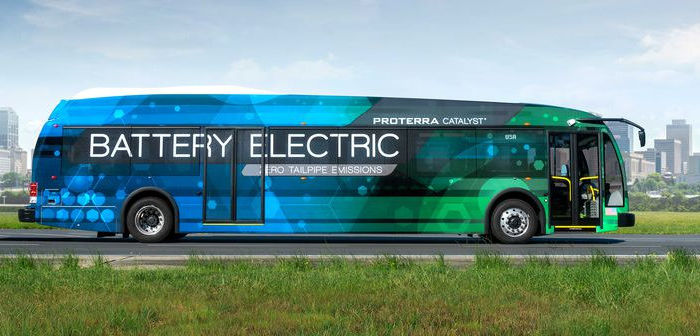April 28, 2018;

About 280,000 barrels a day of fuel won’t be needed this year.
China adds a London-sized electric bus fleet every five weeks.
Hybrids and electrics to hit 22 percent of all buses by 2021. {Freedonia Group est.} Electric bus company Proterra predicted that, in the US alone, electric buses will represent a third of all new transit sales by 2020, 50 percent by 2025,
With China leading the way, making the traditional smog-belching diesel behemoth run on electricity is starting to eat away at fossil fuel demand.
China had about 99 percent of the 385,000 electric buses on the roads worldwide in 2017, accounting for 17 percent of the country’s entire fleet. Every five weeks, Chinese cities add 9,500 of the zero-emissions transporters—the equivalent of London’s entire working fleet, according Bloomberg New Energy Finance.
All this is starting to make an observable reduction in fuel demand. And because they consume 30 times more fuel than average sized cars, their impact on energy use so far has become much greater than the passenger sedans produced by companies from Tesla Inc. to Toyota Motor Corp.
For every 1,000 battery-powered buses on the road, about 500 barrels a day of diesel fuel will be displaced from the market, according to BNEF calculations. This year, the volume of fuel not needed may rise 37 percent to 279,000 barrels a day because of electric transport including cars and light trucks.
It is good that China is ahead on electrifying its fleet because it has the world’s worst pollution problem. With a growing urban population and galloping energy demand, the nation’s legendary smogs were responsible for 1.6 million extra deaths in 2015, according to non-profit Berkeley Earth.
BYD estimates its buses have logged 17 billion kilometers (10 billion miles) and saved 6.8 billion liters (1.8 billion gallons) of fuel since they started ferrying passengers around the world’s busiest cities. That, according to Ho, adds up to 18 million tons of carbon dioxide pollution avoided, which is about as much as 3.8 million cars produce in each year.
Other cities are taking notice. Paris, London, Mexico City and Los Angeles are among 13 authorities that have committed to only buying zero emissions transport by 2025.
London is slowly transforming its fleet. Currently four routes in the city center serviced by single-decker units are being shifted to electricity. There are plans to make significant investments to the clean its public transport networks, including retrofitting 5,000 old diesel buses in a program to ensure all buses are emission-free by 2037.
London’s network draws about 1.5 million barrels a year of fuel. If the entire fleet goes electric, that may displace 430 barrels a day of diesel for each 1,000 buses going electric, reducing U.K. diesel consumption by about 0.7 percent, according to BNEF.
see full article at
www.bloomberg.com/news/articles/2018-04-23/electric-buses-are-hurting-the-oil-industry
and
www.vox.com/energy-and-environment/2017/10/24/16519364/electric-buses





